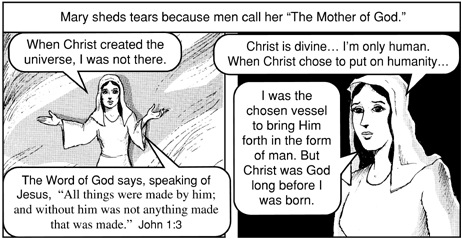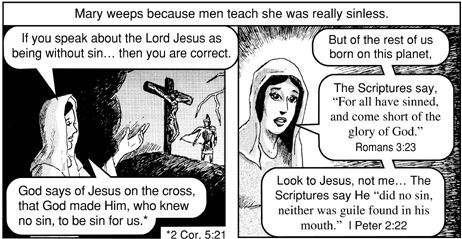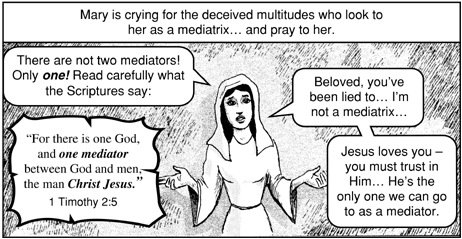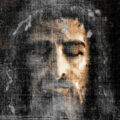
Salesmen, particularly of more expensive goods or services, are taught to think about an elevator pitch. The concept goes something like this. Imagine you unexpectedly find yourself in an elevator with the key decision maker of an important prospect. You have been trying to get a meeting with him for months to no avail. What could you say to him to get him interested in what you have to offer, at least to look further, in a short period of time? How would you answer objections he may raise?
Along these same lines, what might you say about your Catholic faith if given a brief opportunity to present and defend it? I think it would largely depend on the background of the person you were speaking with. None-the-less, in general preparation there may be some points to consider for your arsenal.
H. W. Crocker III took a crack at this recently for Crisis Magazine. His list is composed of 10 points, in what he calls “countdown order.” Below is a shortened version of that list:
10. Hope
Classical paganism, as we know, always ended in despair – a noble despair sometimes, but despair nevertheless. Eastern religions don’t offer much in the way of hope, as they are tied to doctrines of fate, cycles of history, and a nirvana of extinction. Reformation Protestantism is pretty despairing, too, with Calvin’s belief that it would have been better for most people if they had never been born, predestined as they are for damnation. Secularism and materialism are no better, as wealthy secular societies tend to have the highest rates of suicide.
But in the Catholic Church, there is hope. Salvation is open to every man willing to take it. And though Jesus warned His apostles that following His way meant enduring inevitable persecution and hatred, He also gave them this promise: The gates of hell would not prevail against the Church. Even outsiders recognize this. Who ever heard of a deathbed conversion to Methodism? Hope comes from the Real Thing.
9. The Inquisition
The Inquisition? Yes, let’s not be shy. The Inquisition is every Catholic-basher’s favorite tool of abuse – though it is one that is very much not in the basher’s favor. There were several Inquisitions. The first in order of importance in Catholic history was the Inquisition against the Albigensians – a heresy that encouraged suicide, euthanasia, abortion, sodomy, fornication, and other modern ideas that were distasteful to the medieval mind. The struggle against the Albigensians erupted into war – and a war that could not be carefully trammeled within crusading boundaries. So Pope Gregory IX entrusted the final excision of the Albigensian heresy to the scalpel of the Inquisition rather than the sword of the Crusader.
8. The Crusades
All right, I recognize that this is another problem area for some milquetoast Catholics, but let’s be blunt: Do we believe in reclaiming the world for Christ and His Church, or don’t we? Medieval knights took that responsibility seriously, wore the cross on their capes and tunics, and prayed and understood an incarnational faith that acted in the world. It was these knights’ defensive war – and the defensive war of the Church and its allies up through the 18th century, for a millennium of Western history – that repelled Islamic aggression and kept western Europe free. For that we should be ashamed? No: It is one of the glories that was Christendom that in the Middle Ages the pope could wave his field marshal’s baton and knights from as far away as Norway – not to mention England, France, and Germany – would come to serve. Men were Catholics first in those days.
Today, because of Islamic terror groups, the West is again strapping on its armor. We shouldn’t be ashamed of our predecessors who were compelled to do the same.
7. The Swiss Guards and the French Foreign Legion
Though only one of these institutions is under the direct supervision of the Vatican, both qualify as Catholic institutions that should warm the very cockles of our hearts. Indeed, next time you meet a Protestant who asks you why you are a Catholic, try telling him this: I’m a Catholic because I believe in the one, holy, Catholic, and apostolic Church as founded by Jesus and His disciples and as led through the power of the Holy Spirit by the pope in Rome who is himself guarded by the Swiss guards of the Vatican whose uniforms were designed, at least some believe, by Michelangelo. If your interlocutor doesn’t immediately seek instruction to convert, you know you’ve met a hard case.
6. Art
Certainly the famous literary Catholics of the English-speaking world – John Henry Cardinal Newman, Hilaire Belloc, G.K. Chesterton, Graham Greene, Evelyn Waugh, Siegfried Sassoon (who converted later in life), and Thomas Merton – have all played an enormous part in my own conversion and continuing appreciation of the faith. Even Catholics of an unorthodox stripe (like Greene) have had a powerfully orthodox influence on me.
Writing, of course, is far from the only artistic testimony to the faith. Catholicism has always surrounded itself with beauty, regarding it as the splendor of truth. In the words of the German priest, professor, and theologian Karl Adam, “Art is native to Catholicism, since reverence for the body and for nature is native to it.” The Puritan influence is foreign to Catholicism – just as the idea that smashing altars, defacing Madonnas, and breaking stained glass as a religious act is foreign, and indeed heretical, to Catholics. The Catholic Church leaves such Talibanism to the Protestants and iconoclastic heresies. The Catholic Church, instead, offers a celebration of beauty; and beauty, in our world of pierced faces, body tattoos, gangsta rap, and concrete tower blocks, is something we could use much more of.
5. Freedom
Yes, the good old reactionary, repressive Catholic Church has been the most ardent defender of freedom in the history of the world – though it almost never gets credit for it. We live in an age of determinist ideologies – with the fate of nations and individuals supposedly determined by race, economics, history, psychology, genetics, or even – insofar as Protestants have any common doctrinal beliefs – predestination. The Catholic Church stands alone in radical defense of man’s free will.
4. The Saints
The Catholic is never alone. God is always near. The Catholic remembers Mary. He remembers her saying yes to the Incarnation. He remembers those who have gone before him: the vast parade of saints whose personalities and attributes are so various, so free, and yet so devoted to the singular path that leads to holiness and union with God.
3. Unity
When we affirm the Nicene Creed, we affirm our belief in the “one, holy, Catholic, and apostolic Church.” The Creed does not say “many, reformed, anti-Catholic, Bible-based churches.” Nor does it say, “several nation-based, autocephalous, and selectively conciliar churches.” The Church is called to be one – one body of Christ, one bride of Christ.
2. The Sacraments
The sacraments and the visible Church are another proof and nurturer of the faith. I am among the least mystical of men, but I will gladly stump up and affirm the efficacy of the sacraments, sincerely and prayerfully entered into. With Pascal I would affirm that one actually learns the Catholic faith by doing – which is why deracinated, prissy, critical philosophes standing outside will never “get it.” The faith of the Catholic is a great drama unfolding before God, and we are the players in it. There is the awesome reality of the Eucharist, God made flesh at every Mass, and our responsibility before Him and in receiving Him. There is the visible alter Christus of the priesthood. Even those sacraments that many Catholics find painful – such as penance – are powerful reminders of the reality of God and of the necessity of both our faith and our good works.
1. Truth
Nothing else would matter about Catholicism if it weren’t true. But it is our firm belief as Catholics that it is true. And, indeed, I believe that the historical case for the Catholic Church is virtually irrefutable, as irrefutable as it was to Cardinal Newman. And there is something else. We know that the Church affirms that its members and servants are all subject to original sin. But while men might falter, the teaching of the Church does not. That has been our rock, tested through the tempests of centuries and undiminished through time.
Crocker is a convert from Anglicanism and author of Triumph: The Power and the Glory of the Catholic Church. His complete article What’s So Great About Catholicism? expounds on the above points.
BTW — Crisis Magazine is one of the best multi-author Catholic blogs out there. Check it out!




















